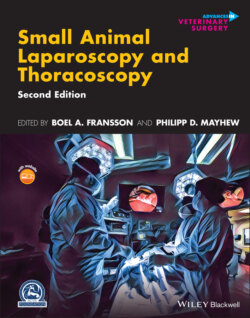Читать книгу Small Animal Laparoscopy and Thoracoscopy - Группа авторов - Страница 79
Display Monitors, Auxiliary Screens, and “All‐in‐One” Video Systems
ОглавлениеTo achieve superior live images during surgery, the quality of the display monitors and auxiliary screens is as important as any other aspect of the video chain. They vary in size, resolution, inputs, and other features. Monitors 17–26 in. are the most common. Flat screen monitors have replaced the old CRT monitors, as in consumer electronics. The resolution of the monitor should match or surpass the resolution of the other elements of the imaging chain. Surgical display monitors should have a minimum of 500 lines for standard definition single‐chip cameras, 750 lines for standard definition three‐chip cameras, and 1080p to obtain maximum benefit from a full HD camera system [1–5].
Figure 3.9 (A). 4K modular imaging system combining white light and NIR/ICG applications. IMAGE 1 S Connect II and IMAGE 1 S 4U Linc modules. (B). FULL HD 1920 × 1080 all‐in‐one unit consisting of a camera control unit, LED light source, 18.5 in. touch screen (16 : 9 format), digital capture system.
Source: TELEPACK + © KARL STORZ SE & Co. KG, Germany.
Figure 3.10 Insufflators. (A). Veterinary dedicated insufflator with max flow of 20 l/min. (B). State‐of‐the‐art electronic insufflator combined with heating system and a max flow of 50 l/min.
Source: © KARL STORZ SE & Co. KG, Germany
A 4K Image is best displayed on a monitor of 32 in. or more, as smaller monitors do not have the capability of showing the detail generated by a 4K camera.
Ideally, multiple mobile monitors should be situated opposite the surgeon and surgeon's assistants so that each surgical team member has a straightforward view [9,44–48]. Modern FULL HD Compact “all‐in‐one” units typically include a CCU, light source, 18.5 in. monitor, insufflation pump (for flexible endoscopy), screen, and image capture module (Figure 3.9b). These units can provide a FULL HD image connected to rigid endoscopes, traditional and CMOS flexible endoscopes, and newer disposable flexible endoscopes. A dedicated keyboard can be attached, allowing the surgical team to enter patient data, and send it to a hospital network via USB cable or flash drives. These state‐of‐the‐art units also comprise DVI external outputs for the connection of multiple auxiliary monitors [1–5, 8, 13, 14].
